- Register
- Log in to Tune-In
- Wishlist (0)
-
Shopping cart
(0)
You have no items in your shopping cart.
Beatles News
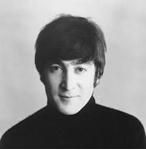
Some John Lennon songs from 'Double Fantasy' sound like the 1950s. This was because John heard Queen's "Crazy Little Thing Called Love."Queen’s “Crazy Little Thing Called Love” inspired John Lennon songs. The former Beatle explained why Queen inspired him to start making music again. Notably, Queen’s “Crazy Little Thing Called Love” was a bigger hit than John’s No. 1 song from that period.John released his final album, Double Fantasy, in 1980, five years after his previous album, Rock ‘n’ Roll. During a 1980 interview with the Los Angeles Times, John discussed new music. “I love the music of today,” he explained. “It’s the best period since the 1960s: The Pretenders, The B-52’s, Madness. Someone showed me a video of The Clash. They’re good.
Source: Matthew Trzcinski/cheatsheet.com
details

Paul McCartney can't help but sing the praises of his eight grandchildren, or "chillers," as he calls them.
The Beatles legend is known as "Grandude" to his grandkids, who include daughter Stella McCartney's four children and daughter Mary McCartney's four sons. "One of my grandkids — who used to call me 'Grandad' — just happened one day to say 'Grandude' and it kind of stuck," McCartney told the BBC in 2019. "So the other kids started calling me 'Grandude.' "
McCartney has written two picture books, Hey Grandude! and Grandude's Green Submarine. Both were inspired by his grandchildren, with whom he enjoys dancing, making music and watching soccer.
"I'm really happy with how Hey Grandude! was received, as this was a very personal story for me, celebrating Grandudes everywhere and their relationships and adventures with their grandchildren," he told PEOPLE in a statement. "I love that it has become a book read to grandkids at bedtime all around the world."
Source:people.com
details
John Lennon was not a fan of one of Paul McCartney's songs. According to a Beatles engineer, he made his hatred of the song very clear.By the end of the 1960s, Paul McCartney was beginning to get on John Lennon’s nerves. All The Beatles found him domineering in the studio, overly focused on perfecting his songs. One of the songs he spent an exceptionally long time on was “Ob-La-Di, Ob-La-Da.” He was a perfectionist about the production, much to his bandmates’ irritation. It didn’t help that Lennon disliked the song and did not try to hide it.
McCartney dragged The Beatles through endless takes of “Ob-La-Di, Ob-La-Da” while working on the White Album.
“The previous week’s work was a typical study in frustration,” audio engineer Geoff Emerick wrote in his book Here, There and Everywhere: My Life Recording the Music of the Beatles. “We’d worked endlessly on just two songs: Lennon’s ‘Revolution’ and McCartney’s ‘Ob-La-Di, Ob-La-Da,’ done over and over again until we were all sick to death of them. Nonetheless, here we were again, breathing in the same stale studio air, working on those same two tracks.”< details
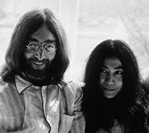
Yoko Ono said one of John Lennon‘s “(Just Like) Starting Over” was a message to all women. “(Just Like) Starting Over” made Yoko feel like crying. In addition, she said the tune had themes of renewal following the horrors of the 1970s.
John collaborated with Yoko on his final album, Double Fantasy. During a 1980 interview with the Los Angeles Times, she discussed the most successful track from that record. “I think John’s song, ‘Starting Over,’ is so beautiful,” she revealed. “It’s a personal message to me, but it’s also like all men saying to all women, ‘Let’s try again.’ It’s not going to be easy.”
Yoko gave her opinion on the state of gender relations. “In the ’60s, there was this sexual revolution which resulted in women waking up to the fact that it was a sexual revolution [only] for men and that women were really being used,” she said. “So, in the ’70s, women became very bitter, which was understandable. They didn’t want to just be ‘toys.’ So, there was this breakdown in relationships and the family.”
Source: Matthew Trzcinski/cheatsheet.c details

In early 2018, Quincy Jones sat down with Vulture's David Marchese for a romp of an interview that would soon set the internet ablaze. In less than 1400 words, the then-84-year-old legendary producer claimed that a "greedy" Michael Jackson had stolen songs and that he knew who killed John F. Kennedy and called modern pop nothing more than "loops, beats, rhymes and hooks." He also shared some choice words about the Beatles, calling them "the worst musicians in the world." Read on for details on his assessment of Paul McCartney's bass playing, the embarrassing Ringo Starr story he shared, and what he said when he called McCartney after the interview went live.
Source: Andrew Miller/bestlifeonline.com
details
The members of the Beatles are known for various feats, but the late great George Harrison has the record for releasing the song with the longest gap between jumping to No. 1, according to Far Out Magazine. George Harrison released “My Sweet Lord” in 1970, and it reached the top of the Billboard Hot 100 chart at the time of its release. The song was part of Harrison’s album, All Things Must Pass, which also topped the charts.After Harrison passed away from lung cancer in 2001, “My Sweet Lord” experienced a resurgence.
The song reached the top of Billboard‘s Hot 100 chart once again two months after Harrison’s death, making the gap between the song’s first and second chart-topping weeks 31 years.At the time of Harrison’s death and “My Sweet Lord’s” resurgence, a spokesperson for EMI Records released a statement regarding the song’s newfound success. “We are very happy that the reissue of My Sweet Lord continues to spread George Harrison’s music and message around the world,” the spokesperson said (quote via Far Out). “It’s especially appropriate that the Material World Charitable Foundation, a charity that George s details
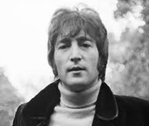
John Lennon wanted people to know the 1960s were over. In addition, he wanted people to know that World War II was over. During interviews, the former Beatle criticized nostalgia.
The book All We Are Saying: The Last Major Interview with John Lennon and Yoko Ono features a 1980 interview. In it, John wanted people to stop caring so much about World War II and the 1960s. “The war is over and the ’60s is over and The Beatles is over and it’s all the same,” he said. “I’m not against the war or The Beatles or Paul, George, and Ringo. John made similar remarks about the 1960s in his song “God” from the album John Lennon/Plastic Ono Band.
“I’ve no ax to grind either way, but I don’t want to go to the reunion with Japanese fighter planes,” he added. “I don’t want to be one of those people meeting around the Messerschmitts and the Spitfires reliving World War II. I’m not interested in it, OK? It’s just irrelevant, absolutely irrelevant.” For context, Messerschmitts and Spitfires were both aircraft used in World War II. The former were used by the Nazis and the latter were used by the Allies.
Source: Matthew Trzc details
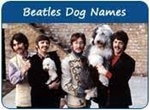
John Lennon. Paul McCartney. Ringo Starr. George Harrison. Each of them: an icon. Together, they were legendary! Formed in Liverpool in 1960, The Beatles remain — to this day — one of the most influential bands of all time.
If the fab four still rock your world, these Beatles-inspired dog names — lifted from old song lyrics and the band members’ storied lives — will have you humming every time you “Twist and Shout” for your dog. It’s the perfect way to pay tribute to your favorite band. After all, your dog won’t mind being named “Sgt. Pepper,” but your child sure will. Can you dig it?
Source: Jenna Wadsworth/yahoo.com
details
There’s a memorable scene in Peter Jackson’s 2021 documentary Get Back where a microphone concealed in a pot of flowers in the dining room at Twickenham Studios picks up a discussion between John Lennon and Paul McCartney. It’s early afternoon on Monday 13 January, 1969 and the pair are discussing the sudden departure of George Harrison from The Beatles and an unsuccessful meeting the previous day to try and resolve the situation.
“It’s a festering wound and yesterday we allowed it to go even deeper and we didn’t give him any bandages,” observes Lennon drolly. “I do think that he’s right,” concedes McCartney, “that’s why I think we’ve got a problem now.”
Harrison left after McCartney allegedly accused him of “vamping” on the rehearsals for the song Get Back. But there was a deeper issue at stake. By then Harrison had emerged as a songwriter of real merit. Wedged between two mercurial talents, both unable to rescind creative ground, he doggedly and delicately chose his moments to push his own material forward.
Source: Neil Crossley/musicradar.com

Our feelings about how things work in a recording studio are similar to our feelings about how things work on the training pitch at an elite football club. In both cases most of us will never be in a position to witness how this particular form of human interaction operates. In the absence of direct experience we combine our feelings about music — that it’s a matter of divine spark occurring between human beings with a shared purpose — and our feelings about people — that they are at their best when they are happy and inspired — to create a picture which satisfies our need to be emotionally invested in its making. In that sense, what Abbey Road represents in its position as the best-known and, from certain angles, the last recording studio in the world is a whole way of feeling about music.
Source: David Hepworth/bigthink.com
details
After The Beatles split in 1970, Paul McCartney continued his career with the release of two solo albums and seven more with Wings, as well as touring at all levels of the music industry, from universities to arenas. It wasn’t all easy going, though. The Beatles’ catalogue contained so much gold, and McCartney knew from day one that his new material was being compared to his golden era.
“Wings are underrated,” said McCartney in the May 2021 issue of Bass Player. “The Beatles was the best band in the world. It’s difficult to follow that. It’s like following God. Very difficult, unless you’re Buddha. Anything Wings did had to be viewed in the light of the Beatles. And the comparisons were always very harsh.”
Source: Nick Wells, Joel McIver/guitarworld.com
details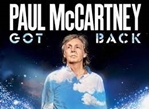
Got Back starts with an intimate arena show in Adelaide, the city where The Beatles made history in 1964 on their first visit to Australia. An estimated 350,000 people lined the streets between the airport and Town Hall to catch a glimpse of the band. Paul will then travel to Melbourne, Newcastle, Sydney, Brisbane, and the Gold Coast performing in stadiums – with the shows in Newcastle and the Gold Coast being his first concerts there. These dates will see McCartney return for his first live performances in Australia in six years. McCartney was last in Australia in December 2017 (which saw him win a Helpmann Award for Best International Contemporary Concert in 2018 beating the likes of Ed Sheeran), wowing audiences nationwide with a near three-hour show, the Sydney Morning Herald reporting, “If the greatest songs elicit an emotional response too powerful to properly explain, it’s safe to say no review of Paul McCartney’s tour will quite do it justice.”
Source: The Rockpit/therockpit.net
details
As it turned out, on that day they didn’t finish the work in the morning and afternoon sessions. In fact they were still there at ten o’clock at night, the point in the evening when Abbey Road neighbours were inclined to complain, particularly if a band was using the echo chamber on the outside of the building. Most of what they had recorded that day would go on the first LP but George Martin decided that “Hold Me Tight” was not quite strong enough yet and therefore he needed another tune to complete the record. They took a break in the canteen in the basement to decide what it might be. It was Alan Smith, a journalist friend from Liverpool who was with them that day writing a story for NME, who suggested they do “Twist And Shout”—or, as he said at the time, “the thing you do that sounds like ‘La Bamba.'” This seemed as good an idea as any. They returned to Studio Two and took up their positions. They were exhausted by the demands of the day and thinking about how early they would have to get up in the morning. John was further wondering whether his flu-racked voice could possibly hold up for the performance ahead.
Source: David Hepworth/lithub.com

The Beatles' song 'She's Leaving Home' amazed George Martin with its construction and grasp of the generational conflict described in its lyrics.George Martin enjoyed a front-row view of The Beatles’ success. The producer wasn’t perfect — he regretted not supporting George Harrison enough — but he wrung fantastic performances out of the Fab Four and played a crucial role in making the band successful. Except for when he didn’t. The Beatles amazed Martin with “She’s Leaving Home” even though he hardly worked on the song.
Newspaper headlines fueled Paul McCartney and John Lennon’s lyrics for Sgt. Pepper’s Lonely Hearts Club Band.
Lennon combined stories about a car wreck and calls for public improvements (4,000 potholes in Blackburn) on his portion of “A Day in the Life.” Paul invented a fictional meter-maid based on an article he read about that new profession and changed the English language in the process with “Lovely Rita.”
Source: Jason Rossi/cheatsheet.com
details
They played different style of music and had different images, but the personalities of their bands' members made The Beatles and Rolling Stones exactly alike.The Beatles had no peers when they were at the peak of their powers. Still, The Rolling Stones came close, with some help from John Lennon, whose throwaway song became their first hit. The bands cultivated different images — proper and respectful gentlemen vs. streetwise rebels — but The Beatles and Rolling Stones were exactly alike in one major way in the 1960s.Few (if any) classic rock fans would confuse the music the Beatles and Stones made, especially in each band’s early days. The Fab Four channeled their shared love of early rock ‘n’ roll and R&B into easily digestible pop hits. The Stones’ passion for blues came through on their first albums, where they covered Willie Dixon, Muddy Waters, Rufus Thomas, and Chuck Berry.
Source: Jason Rossi/cheatsheet.com
details